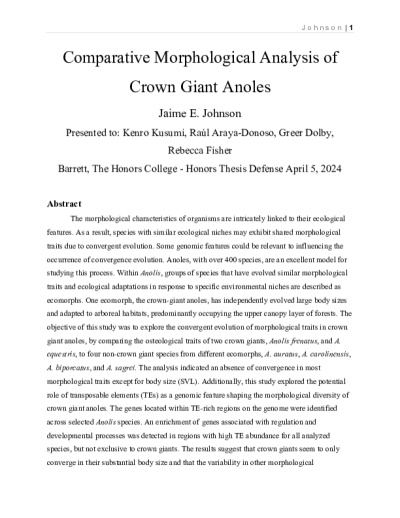Filtering by
- All Subjects: Evolution
- Creators: Kusumi, Kenro


One of the largest problems facing modern medicine is drug resistance. Many classes of drugs can be rendered ineffective if their target is able to acquire beneficial mutations. While this is an excellent showcase of the power of evolution, it necessitates the development of increasingly stronger drugs to combat resistant pathogens. Not only is this strategy costly and time consuming, it is also unsustainable. To contend with this problem, many multi-drug treatment strategies are being explored. Previous studies have shown that resistance to some drug combinations is not possible, for example, resistance to a common antifungal drug, fluconazole, seems impossible in the presence of radicicol. We believe that in order to understand the viability of multi-drug strategies in combating drug resistance, we must understand the full spectrum of resistance mutations that an organism can develop, not just the most common ones. It is possible that rare mutations exist that are resistant to both drugs. Knowing the frequency of such mutations is important for making predictions about how problematic they will be when multi-drug strategies are used to treat human disease. This experiment aims to expand on previous research on the evolution of drug resistance in S. cerevisiae by using molecular barcodes to track ~100,000 evolving lineages simultaneously. The barcoded cells were evolved with serial transfers for seven weeks (200 generations) in three concentrations of the antifungal Fluconazole, three concentrations of the Hsp90 inhibitor Radicicol, and in four combinations of Fluconazole and Radicicol. Sequencing data was used to track barcode frequencies over the course of the evolution, allowing us to observe resistant lineages as they rise and quantify differences in resistance evolution across the different conditions. We were able to successfully observe over 100,000 replicates simultaneously, revealing many adaptive lineages in all conditions. Our results also show clear differences across drug concentrations and combinations, with the highest drug concentrations exhibiting distinct behaviors.


Pathogenic drug resistance is a major global health concern. Thus, there is great interest in modeling the behavior of resistant mutations–how quickly they will rise in frequency within a population, and whether they come with fitness tradeoffs that can form the basis of treatment strategies. These models often depend on precise measurements of the relative fitness advantage (s) for each mutation and the strength of the fitness tradeoff that each mutation suffers in other contexts. Precisely quantifying s helps us create better, more accurate models of how mutants act in different treatment strategies. For example, P. falciparum acquires antimalarial drug resistance through a series of mutations to a single gene. Prior work in yeast expressing this P. falciparum gene demonstrated that mutations come with tradeoffs. Computational work has demonstrated the possibility of a treatment strategy which enriches for a particular resistant mutation that then makes the population grow poorly once the drug is removed. This treatment strategy requires knowledge of s and how it changes when multiple mutants are competing across various drug concentrations. Here, we precisely quantified s in varying drug concentrations for five resistant mutants, each of which provide varying degrees of drug resistance to antimalarial drugs. DNA barcodes were used to label each strain, allowing the mutants to be pooled together for direct competition in different concentrations of drug. This will provide data that can make the models more accurate, potentially facilitating more effective drug treatments in the future.